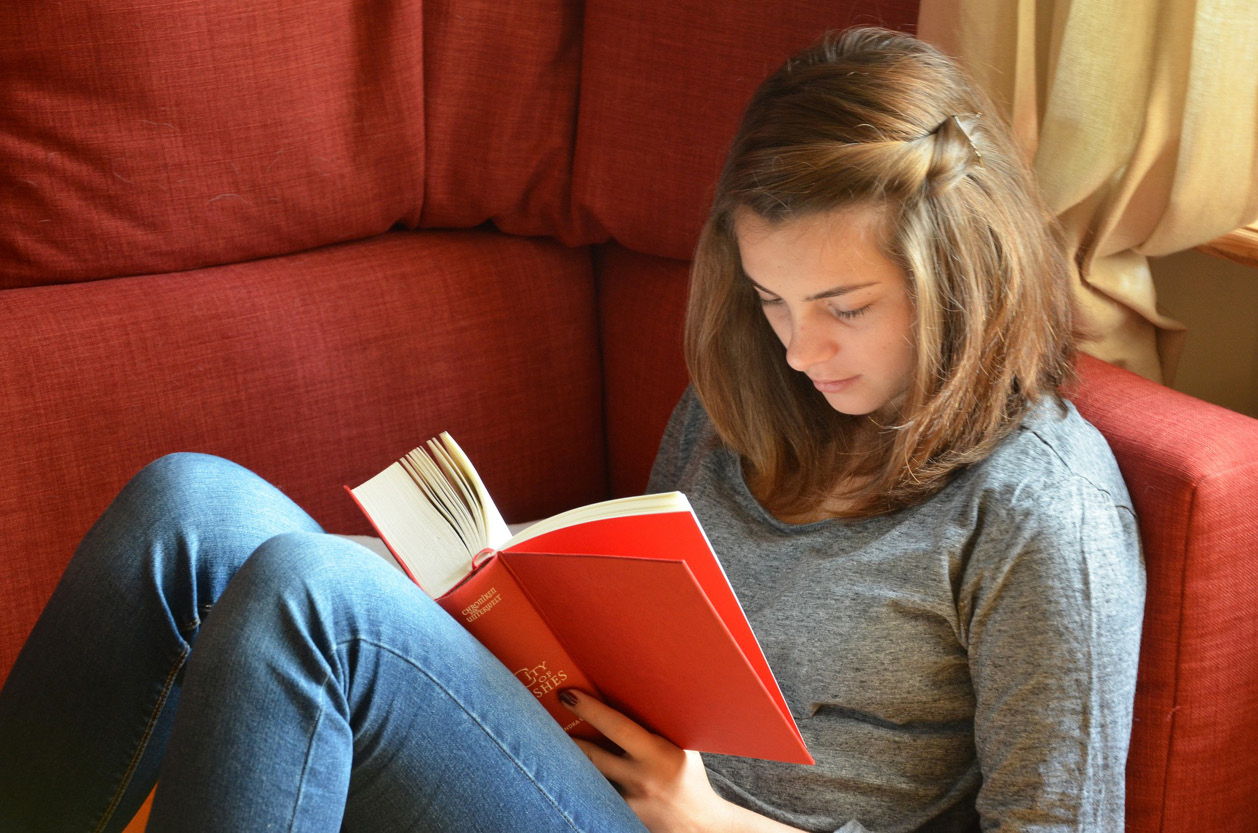The Government insists that all children in maintained-sector schools are taught the basics of reading using one of the many c-a-t phonics programmes. I have no argument with that – as long as the authorities accept that you also need whole-word recognition to read everyday non-phonetic words such as Charlotte, George, theatre and knife. But the operative word is “basics”. It’s what happens next that is crucial.
Phonics teaches children decoding skills. No one can read unless they can decode, so this is an essential first stage, but that is all it is. Phonics are not the be-all and end-all of reading.
Nearly all children eventually learn to turn the squiggles on the page into words. They may not be very fluent but when they see “Danger!” or “menu” they know what it means. And, by the age of seven, most can stumble through a passage from some sort of book while an adult listens. But that is not reading. Real reading is what comes next.
The National Literacy Trust reported that in 2014 the number of children who read daily outside class is rising – it stood at 41.4% that year. But what about the 58.6% (the majority) who do not? The same research found that 54.4% of children claim to like reading very much or quite a lot. That still leaves an unmentioned 45.6 % who presumably don’t like it all. This is not good enough.
Widespread lack of engagement with books lies at the heart of most of our educational ills. Children who read a lot of books fast, ably and with high levels of comprehension achieve more in every area of the curriculum than those who don’t. And the key moment to catch them is the transition between primary and secondary school – the point at which many 11 and 12-year olds decide that reading is babyish and there are other things they’d rather be doing.
It is all too easy – as hand-wringing commentators usually do – to blame television, phones, computer games and other distractions that have instant appeal. Actually, the root cause lies in the way children are taught to read and the failure to develop them as readers.
Reading is like swimming. Getting your 10-metre certificate is not the end of your swimming career. It’s the beginning. Once you can use a stroke or two to propel yourself along, you can strike out, build up your swimming stamina and enjoy the water. Perhaps in time you’ll swim the Channel or compete in the Olympics. The possibilities are endless, but not if you hardly ever go in the water.
To become confident deep-end readers, children have to practise all the time. Otherwise they will slip backwards and even the decoding skills will dull. Real readers go on getting better at it throughout their lives. I know, for example, that although I’ve always been a good reader, I read more quickly and capably now than I did in my twenties. I’ve done nothing to bring that about – except read thousands of books.
It is also important that children learn not to subvocalise because it holds them up. Subvocalisers painstakingly read every word aloud to themselves in their heads as we all do at the very beginning or if we’re trying to decode a foreign language. It’s a very slow process. A skilled reader reads for meaning without having to “translate” each word into a sound. The brain learns to convert signs seen by the eye into meaning without consciously passing though the medium of spoken or heard words.
Sadly, reading development is often neglected by busy teachers trying to teach a crowded national curriculum to a large class. It’s all too easy to think that once Jack or Ella can “read” the job is done – tick the box, issue a reading list and forge on to the next thing.
The best place for a child to do that essential daily practice – which should quickly become a pleasure rather than a chore – is at home or in a quiet corner at school. That means working with parents and persuading them to take children to libraries (use them or lose them) and/or buying them books. It means getting them to turn off (most) screens and certainly getting television sets, laptops, phones, games consoles and the like out of children’s bedrooms – or, better still, don’t put them in there in the first place. There is a lot of tactful work for schools to do here.
The most useful thing teachers and parents can do to encourage children and teenagers to read is to be seen reading a lot themselves. Parents who say they are “too busy to read” simply convey the message that reading is beneath the attention of important grown-ups. “Do as I say but not as I do” cuts no ice with children. They will quickly stop reading because not reading will be seen as “cool” and “adult”.
There should, therefore. be lots of silent reading sessions in school. We used to call it ERIC (Everyone Reads in Class) or USSR (Uninterrupted Sustained Silent Reading). The key word is “everyone”. Children need to see adults absorbed in books – especially at secondary school.
Susan Elkin taught secondary school English for 36 years. She is the author of ‘Unlocking the Reader in Every Child’ (Ransom, 2010) and ‘Encouraging Reading’ (Continuum, 2007)



